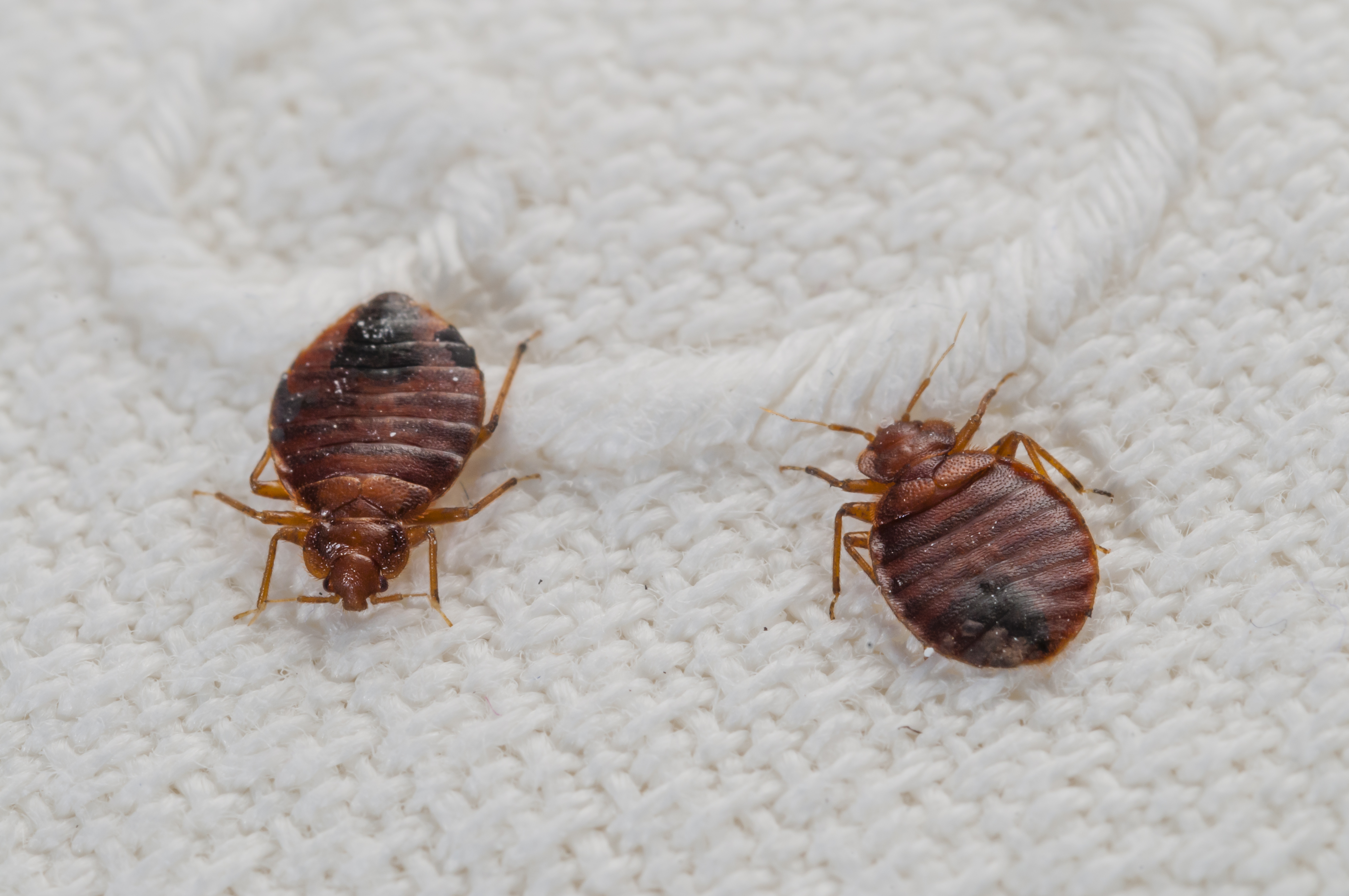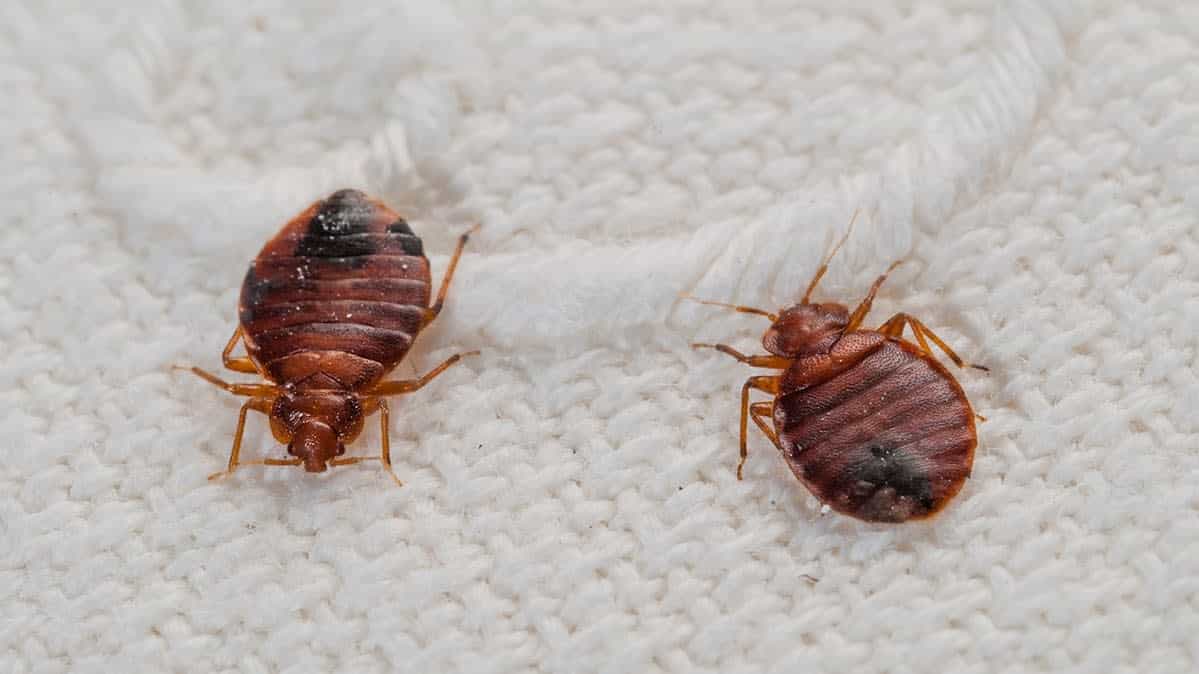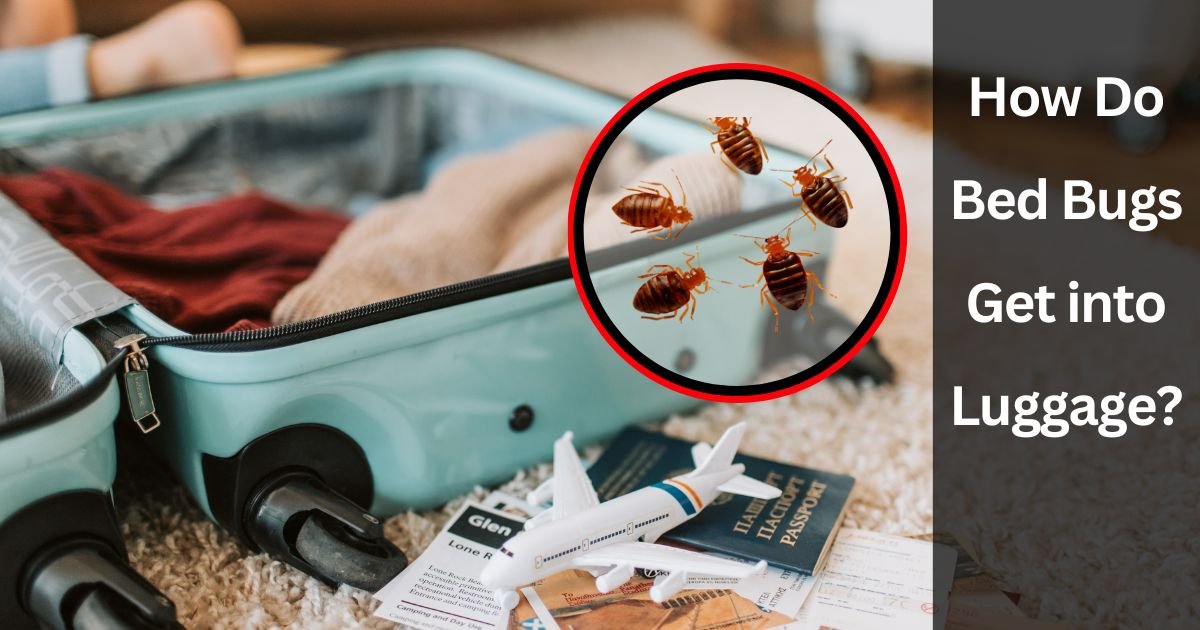Bed bugs can infest luggage if it comes into contact with infested items or areas. These pests hitch a ride by crawling into bags left open or on infested surfaces.
Bed bugs are notorious for their hitchhiking abilities, adeptly traveling from place to place with unwitting hosts. Despite their name, bed bugs do not solely reside in beds; they inhabit any space close enough to their food source – human blood.
That’s why luggage, often placed on beds, chairs, or floors in hotels or homes, provides an ideal vehicle for these pests. As travelers, it’s crucial to remain vigilant about where you place your bags and what you bring into your home from trips. Taking preventive measures can save you from the extensive effort required to combat a bed bug infestation. Understanding the behaviors of bed bugs is key in avoiding their unwanted company on your travels and in your home.
Bed Bugs: Tiny Hitchhikers In Your Luggage
Discovering bed bugs in luggage can turn a dream trip into a nightmare. These tiny pests are experts at hiding and traveling with unsuspecting hosts.
Characteristics of Bed BugsCharacteristics Of Bed Bugs
Bed bugs are small, nocturnal insects with a talent for hiding. Their flat bodies make it easy for them to sneak into tight spaces.
- Oval-shaped and brownish in color
- Adults grow to about 5mm in length
- Can live several months without a meal
Common Ways Bed Bugs Spread
Bed bugs move from place to place with ease. Luggage is one of their favorite modes of travel.
| Method | Description |
|---|---|
| Hotels | They hitch a ride from hotel rooms to your bags. |
| Public Transport | Buses and trains can harbor bed bugs that climb onto your belongings. |
| Second-Hand Furniture | Used items may introduce bed bugs to your home and luggage. |
| Clothing | Bugs cling onto clothes that are packed away in suitcases. |
Bed Bugs And Travel: A Troublesome Connection
Imagine a wonderful vacation with memories that last a lifetime. Now imagine bringing home tiny, unwanted hitchhikers that bite. That’s the reality of bed bugs and travel. These pesky insects have a knack for sneaking into luggage, turning your trip memories into nightmares.
The Role Of Hotels And Hostels
Hotels and hostels are bed bugs’ favorite playgrounds. With a revolving door of guests, these places can unintentionally become the perfect spot for bed bugs to thrive. Here’s why:
- Luggage racks and closets are ideal hiding spots for these critters.
- Bed bugs cling onto fabrics or get into luggage left open on the floor.
- Regular room turnover means more chances for bed bugs to hitch a ride.
While most accommodations follow strict hygiene practices, bed bugs can slip through the cracks. It’s important to inspect your room upon arrival and to keep your luggage sealed when not in use.
Public Transportation As A Conduit
Public transportation acts as a major bed bug highway. They can move from personal items to bus seats, waiting areas, and beyond. Here’s what makes public transport a hotbed for bed bugs:
| Public Transport | Bed Bug Risks |
|---|---|
| Trains | Long hours, overnight travels, and fabric seats create perfect hiding spots. |
| Buses | Dense seating and frequent stops allow for easy transfer onto passengers’ belongings. |
| Taxis | Luggage brought into the car can leave behind these uninvited guests. |
Always check your seating area and be mindful of where your luggage rests. Consider using bed bug-resistant luggage covers to add a layer of protection.
Infestation At A Glance: Recognizing Bed Bugs
Welcome to the “Infestation at a Glance: Recognizing Bed Bugs” section. This part of the post aims to shed light on the sneaky travelers known as bed bugs that might hitch a ride in your luggage. Understanding what bed bugs look like and knowing the signs of their presence are key steps in preventing a full-blown infestation in your home.
Physical Appearance Of Bed Bugs
Identifying bed bugs starts with knowing their physical characteristics:
- Size: Adult bed bugs are about the size of an apple seed.
- Shape: They are flat and oval-shaped.
- Color: Their color ranges from light brown to reddish-brown.
- Lifecycle: They transform from translucent nymphs to adults.
After feeding, bed bugs turn a redder color. Their bodies also swell and elongate. Picture a tiny, brown bug that could easily be overlooked if not for its slow, steady movement across your luggage lining.
Signs Of Bed Bug Presence
Recognizing signs of bed bugs can help catch an issue before it spreads:
- Blood Stains: Small red or rusty spots on sheets or luggage fabric.
- Dark Spots: Tiny fecal spots that could be bed bug excrement.
- Eggs: Tiny, pearl-white eggshells hidden in crevices.
- Odor: A musty, sweet smell often accompanies a severe infestation.
Spotting even one of these indicators is a reason to investigate further. Being proactive is key to stopping bed bugs from making your suitcase their new home.
High-risk Environments For Bed Bugs
Travelers often wonder how bed bugs invade their luggage. Understanding high-risk environments helps safeguard belongings. These critters hitch rides with unsuspecting hosts. They thrive in places with a high turnover of people.
Frequent Targets For Infestation
Bed bugs are masters of stealth. They sneak into luggage with ease. Certain places attract bed bugs more than others. Frequent targets include:
- Hotels: Guests come and go, making hotels a bed bug hotspot.
- Hostels: Dense accommodations increase infestation risks.
- Dormitories: Student turnover presents ample opportunities for bed bugs.
- Public Transit: Buses and trains carry both people and pests.
Risk Assessment Of Accommodations
Before settling in, travelers should scrutinize their accommodations. Conduct a risk assessment to prevent unwelcome guests. Here are steps to take:
- Inspect Beds: Check sheets and mattresses for telltale signs of bed bugs.
- Review Furniture: Scan sofas and chairs. Bed bugs hide in crevices.
- Analyze Reviews: Research prior guest experiences online.
- Use Luggage Racks: Keep luggage off the floor and away from the bed.
- Seal Bags: Use plastic bags to encase your luggage.
| Step | Action | Purpose |
|---|---|---|
| 1 | Inspect Beds | Identify signs of bed bugs |
| 2 | Review Furniture | Find hidden bed bugs |
| 3 | Analyze Reviews | Gauge past infestations |
| 4 | Use Luggage Racks | Minimize contact with infested areas |
| 5 | Seal Bags | Protect luggage from pests |
Protective Measures For Your Luggage
Imagine arriving home from a trip and finding tiny, unwanted guests have hitched a ride in your luggage. Bed bugs are notorious for spreading through travel, but fear not! There are protective measures you can take to ensure your luggage remains bed bug-free. Read on to learn how to shield your belongings from these pests.
Preventive Tips Before Travel
Before setting off, a few smart moves can save you from a bed bug dilemma:
- Research your accommodation: Check reviews for any mentions of bed bugs.
- Choose hard-shell luggage: It offers fewer crevices for bugs to hide.
- Use protective covers: Sealable bags for clothes can keep bugs out.
- Opt for light-colored bags: It’s easier to spot any hitchhikers.
- Carry bed bug spray: An EPA-approved spray can deter pests.
Safe Packing Strategies
The way you pack can block bed bugs from sneaking into your stuff.
| Strategy | Details |
|---|---|
| Use sealable plastic bags | Encase clothes and toiletries to create barriers. |
| Minimize contact | Don’t place luggage on beds or floor—use a rack. |
| Keep it closed | Zip up your luggage when not in use. |
| Laundry strategy | Store worn clothes in a separate bag, preferably vacuum-sealed. |

Credit: www.firstforwomen.com
During Travel: Staying Vigilant
Bed bugs can hitch a ride into your luggage without a ticket. Staying alert during travel is key to avoiding these unwanted souvenirs. Vigilance means a thorough check of your room and belongings. Let’s break down the steps to keep these pests out of your luggage.
Room Inspection Techniques
Before settling in, it’s crucial to inspect your room. Follow these simple steps:
- Check the bed: Peel back the linens and look on and around the mattress.
- Inspect furniture: Examine chairs, couches, and nightstands, especially seams and crevices.
- Look behind headboards: Use a flashlight for a closer look.
- Examine the luggage rack: Bed bugs could be waiting to climb aboard.
Note signs like rust-colored spots, shed skins, or the bugs themselves. Alert hotel staff immediately if you spot any signs.
Handling Suspected Exposure
If you suspect bed bugs, take steps quickly to protect your belongings:
- Isolate your luggage: Place your luggage in the bathtub to prevent bugs from climbing in.
- Use protective covers: Seal luggage in plastic bags or use bed bug-proof luggage liners.
- Heat treat if possible: Bed bugs hate heat. Use a hotel dryer to heat treat clothes if you can.
Remember, never place luggage on the bed. This is like rolling out the red carpet for bed bugs!
After Travel: Avoiding Unwanted Guests At Home
Returning from a trip often means bringing back souvenirs, memories, and sometimes, bed bugs. Sneaky hitchhikers, these pests can easily turn your post-vacation glow into a nightmare. Protect your home with vigilant post-travel routines that keep these unwanted guests at bay.
Post-travel Luggage Treatment
Begin with your luggage. Bed bugs attach to traveling gear, finding their way into your sanctuary.
- Vacuum every crevice of your suitcase.
- Steam clean to kill bugs that hide in fabrics.
- Use hot water for washable items.
- Seal luggage in a plastic bag before bringing it indoors.
These practices guard against infestations.
Strategies For Unpacking Safely
Unpack with a strategy to minimize risk.
- Directly put clothes into the washing machine.
- Inspect personal items under bright light.
- Store suitcase in a dry, isolated area.
Becoming vigilant in post-travel routines keeps your living spaces pest-free.

Credit: www.bedbugsnorthwest.com
Bed Bug Elimination: Expert Advice
Imagine returning home from a trip, only to find you’ve brought along some unwanted guests. Bed bugs are expert hitchhikers and can easily infiltrate your luggage. With the right knowledge, eliminating these pesky invaders is possible.
Professional Pest Control Services
Win the war against bed bugs with professional pest control services. These services offer:
- Thorough inspections to identify infestations.
- Customized treatments tailored to your specific situation.
- Follow-up assessments to ensure complete eradication.
Relying on professionals can save you both time and frustration. Their expertise and advanced methods guarantee a bed bug-free environment.
Diy Remedies And Their Effectiveness
For those preferring a hands-on approach, DIY remedies can be a starting point. Common DIY methods include:
- Vacuuming suitcases and surrounding areas.
- Washing clothes in hot water.
- Using bed bug-proof luggage liners.
While DIY remedies can help, they may not address hidden infestations. They act as a first defense but don’t replace professional solutions.
Legal Aspects And Consumer Rights
Travelers face a pesky foe in bed bugs. Luggage can turn into a carrier for these unwelcome guests. This section covers the legality surrounding bed bug infestations and what rights consumers have when confronted with such issues.
Dealing With Infestations In Accommodations
Guests expect clean lodging. When bed bugs invade, various laws come into play. Most regions require hotels to provide pest-free environments.
- Report infestation promptly to management.
- Document everything, including taking photos.
- Check local regulations on hotel liabilities.
Seeking Reimbursement For Infestations
Guests may seek compensation for bed bug issues. This can cover replacement of items, medical bills, and more.
| Step | Action | Expected Outcome |
|---|---|---|
| 1 | Communicate with hotel management | Immediate action on infestation |
| 2 | File a formal complaint | Record of the issue for legal use |
| 3 | Contact a lawyer if needed | Legal advice and action plan |
Understanding consumer protection laws is key. These laws can offer a pathway to recover losses. Always seek legal advice for complicated situations.
Future Innovations In Bed Bug Prevention
Imagine packing without the fear of bringing bed bugs home. Future innovations aim to achieve just that. Developers are working on new technologies. These aim to protect travelers better from these pesky pests.
Advancements in Luggage DesignAdvancements In Luggage Design
Soon, suitcases might come with bed bug deterrent features. Companies are experimenting with materials that repel bed bugs. They’re blending physical barriers with chemical defenses.
- Zipper locks: Locks that bed bugs can’t penetrate
- Bed bug-proof materials: Fabrics that pests can’t cling to
- Heated compartments: Gentle on clothes but deadly to bugs
Travelers could look forward to a new era of smart luggage. This will keep clothes safe and bed bug-free.
Developing Technologies in Pest DetectionDeveloping Technologies In Pest Detection
Innovative detection solutions are on the horizon. Tech companies are creating portable detectors. Guests can check their rooms upon arrival.
- Sensors: Devices that detect bed bug pheromones
- UV scanners: Lights that reveal hidden bed bugs
- Smartphone apps: Utilize phone cameras to find pests
These advancements mean travelers can take immediate action. They can avoid bringing bed bugs into their luggage.

Credit: www.rottler.com
Frequently Asked Questions For How Do Bed Bugs Get Into Luggage?
How Likely Are Bed Bugs To Get In Luggage?
Bed bugs can easily hitch a ride in luggage, especially if the baggage comes into contact with infested areas during travel or stays. Regular inspection and preventive measures are essential to mitigate this risk.
How Do I Keep Bed Bugs Out Of My Luggage?
Keep bed bugs out of your luggage by using hard-shelled suitcases, sealing clothes in vacuum bags, and thoroughly inspecting hotel rooms. Always elevate your luggage on racks. After traveling, immediately wash all clothes in hot water and vacuum your suitcase.
Can Bed Bugs Get Into Sealed Bags?
Yes, bed bugs can infiltrate sealed bags if they are not completely airtight or if there are small openings. Use heavy-duty plastic bags and ensure a secure seal for effective prevention.
How Did I Get Bed Bugs If I Didn’t Travel?
Bed bugs can hitchhike into your home on used furniture, clothing, or from neighboring apartments with infestations. They don’t exclusively spread through travel. Regular inspections and cleanliness can help prevent an infestation.
Conclusion
Understanding the hitchhiking habits of bed bugs is crucial in preventing them from invading your luggage. With vigilance and the right precautions, you can safeguard your belongings from these unwanted travelers. Remember to stay alert, inspect regularly, and take action immediately if you suspect bed bugs are tagging along on your journey.
Protect your peace of mind and keep your luggage bed bug-free.
Related posts:

I’m MD Tanvir, and I bring years of expertise gained from working closely with pest control companies to the forefront. My journey in the industry has inspired me to launch Bug Battler, a platform aimed at equipping people with the know-how to combat pests autonomously. Through Bug Battler, I aim to empower individuals with practical insights to tackle pest infestations effectively.

